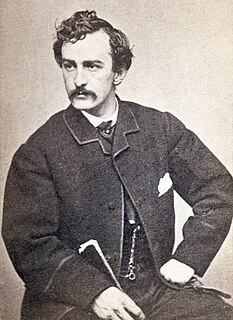
John Wilkes Booth was an American stage actor who assassinated United States President Abraham Lincoln at Ford's Theatre in Washington, D.C., on April 14, 1865. A member of the prominent 19th-century Booth theatrical family from Maryland, he was a noted actor who was also a Confederate sympathizer; denouncing President Lincoln, he lamented the recent abolition of slavery in the United States.

Samuel Alexander Mudd Sr. was an American physician who was imprisoned for conspiring with John Wilkes Booth concerning the assassination of Abraham Lincoln.

Robert Todd Lincoln was an American lawyer, businessman, and politician. He was the eldest son of President Abraham Lincoln and Mary Todd Lincoln. Robert Lincoln became a business lawyer and company president, and served as U.S. Secretary of War and U.S. Ambassador to the United Kingdom.
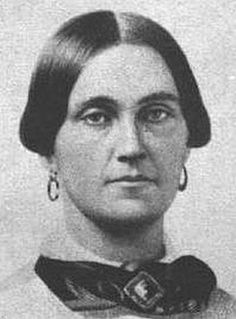
Mary Elizabeth Jenkins Surratt was an American boarding house owner in Washington, D.C., who was convicted of taking part in the conspiracy which led to the assassination of U.S. President Abraham Lincoln in 1865. Sentenced to death, she was hanged and became the first woman executed by the U.S. federal government. She maintained her innocence until her death, and the case against her was and remains controversial. Surratt was the mother of John Surratt, who was later tried, but due to statute of limitations, was not convicted.

David Edgar Herold was an American pharmacist's assistant and accomplice of John Wilkes Booth in the assassination of Abraham Lincoln on April 14, 1865. After the shooting, Herold accompanied Booth to the home of Dr. Samuel Mudd, who set Booth's injured leg. The two men then continued their escape through Maryland and into Virginia, and Herold remained with Booth until the authorities cornered them in a barn. Herold surrendered, but Booth was shot and died two hours later. Herold was sentenced to death and hanged with three other conspirators at the Washington Arsenal, now known as Fort Lesley J. McNair.

Lewis Thornton Powell, also known as Lewis Payne and Lewis Paine, was an American Confederate soldier who attempted to assassinate William Henry Seward as part of the Lincoln assassination plot. Wounded at the Battle of Gettysburg, he later served in Mosby's Rangers before working with the Confederate Secret Service in Maryland. John Wilkes Booth recruited him into a plot to kidnap Lincoln and turn the president over to the Confederacy, but then decided to assassinate Lincoln, Seward, and Vice President Andrew Johnson instead, and assigned Powell the task to kill Seward.

Mary Jackson was an American character actress whose nearly fifty-year career began in 1950 and was spent almost entirely in television. She is best known for the role of the lovelorn Emily Baldwin in The Waltons and was the original choice to play Alice Horton in the daytime soap opera Days of Our Lives, playing the part in the unaired pilot. The role was instead given to Frances Reid.

Louis J. Weichmann was an American clerk who was one of the chief witnesses for the prosecution in the trial following the assassination of Abraham Lincoln. Previously, he had been also a suspect in the conspiracy because of his association with Mary Surratt's family.

John Harrison Surratt Jr. was an American Confederate spy who was accused of plotting with John Wilkes Booth to kidnap U.S. President Abraham Lincoln; he was also suspected of involvement in the Abraham Lincoln assassination. His mother, Mary Surratt, was convicted of conspiracy by a military tribunal and hanged; she owned the boarding house that the conspirators used as a safe house and to plot the scheme.
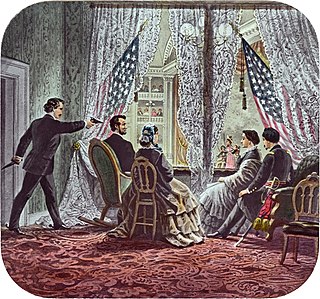
On April 14, 1865, Abraham Lincoln, the 16th president of the United States, was assassinated by well-known stage actor John Wilkes Booth, while attending the play Our American Cousin at Ford's Theatre in Washington, D.C. Shot in the head as he watched the play, Lincoln died the following day at 7:22 am in the Petersen House opposite the theater. He was the first U.S. president to be assassinated, with his funeral and burial marking an extended period of national mourning.

Michael O'Laughlen, Jr. was an American Confederate soldier and conspirator in John Wilkes Booth's plot to kidnap U.S. President Abraham Lincoln, and later in the latter's assassination, though he did not take part in it.

Samuel Bland Arnold was an American Confederate sympathizer involved in a plot to kidnap U.S. President Abraham Lincoln in 1865. He had joined the Confederate Army shortly after the start of the Civil War but was discharged due to health reasons in 1864.
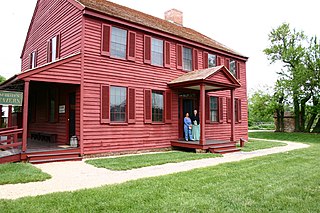
The Surratt House is a historic house and house museum located at 9110 Brandywine Road in Clinton, Prince George's County, Maryland, United States. The house is named for John and Mary Surratt, who built it in 1852. Mary Surratt was hanged in 1865 for being a co-conspirator in the Abraham Lincoln assassination. It was acquired by the Maryland-National Capital Park and Planning Commission (M-NCPPC) in 1965, restored, and opened to the public as a museum in 1976.
John Minchin Lloyd was a bricklayer and police officer in Washington, D.C., in the United States. He was one of the first police officers hired by the Metropolitan Police Department of the District of Columbia when its Day Watch was first formed in 1855. He played a role in the trial of the conspirators in the Abraham Lincoln assassination. Arrested but never charged in the conspiracy, Lloyd's testimony was critical in convicting Mary Surratt.
James W. Pumphrey was a livery stable owner in Washington, D.C. who played a minor role in the events surrounding the assassination of Abraham Lincoln and its aftermath. Assassin John Wilkes Booth hired a horse from Pumphrey which he used to escape after the deed.

Frances Adeline Seward was the daughter of United States Secretary of State William H. Seward and his wife Frances Adeline Miller. The last of five children born to the Sewards, she was their only daughter to survive to adulthood.
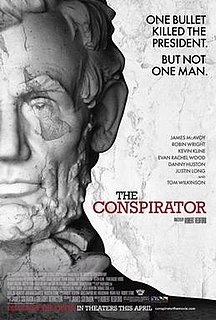
The Conspirator is a 2010 American mystery historical drama film directed by Robert Redford and based on an original screenplay by James D. Solomon. It is the debut film of the American Film Company. The film tells the story of Mary Surratt, the only female conspirator charged in the Abraham Lincoln assassination and the first woman to be executed by the US federal government. It stars James McAvoy, Robin Wright, Justin Long, Evan Rachel Wood, Jonathan Groff, Tom Wilkinson, Alexis Bledel, Kevin Kline, John Cullum, Toby Kebbell, and James Badge Dale.
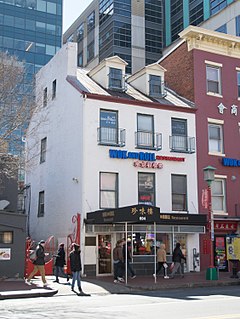
The Mary E. Surratt Boarding House in Washington, D.C. was the site of meetings of conspirators to kidnap and subsequently to assassinate U.S. President Abraham Lincoln. It was operated as a boarding house by Mary Surratt from September 1864 to April 1865.

Lucy Lambert Hale was the daughter of U.S. Senator John Parker Hale of New Hampshire, and was a noted Washington, D.C., society belle. She attracted many admirers including Oliver Wendell Holmes, Jr., Robert Todd Lincoln; and stage actor and presidential assassin John Wilkes Booth, to whom she was secretly engaged. Lucy's photograph was found in Booth's pocket after Sergeant Boston Corbett mortally wounded Booth 12 days after he assassinated Abraham Lincoln.
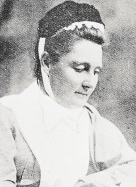
Sibylla Emily Maude, known as Nurse Maude, was the founder of district nursing in New Zealand. She was loved for her selfless work for the poor, walking many miles each day in every kind of weather to treat those who could afford no medical help.


















